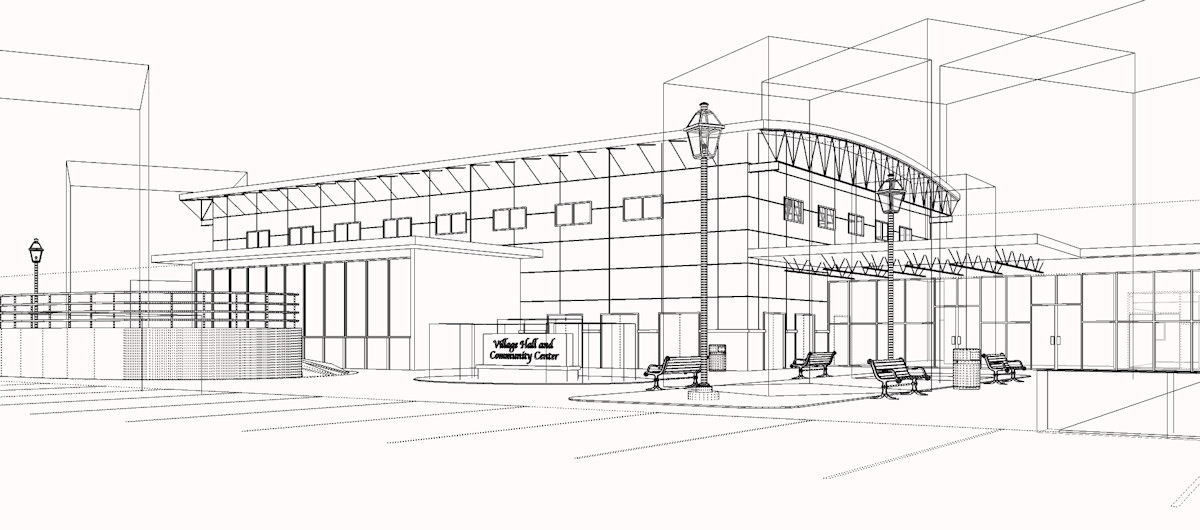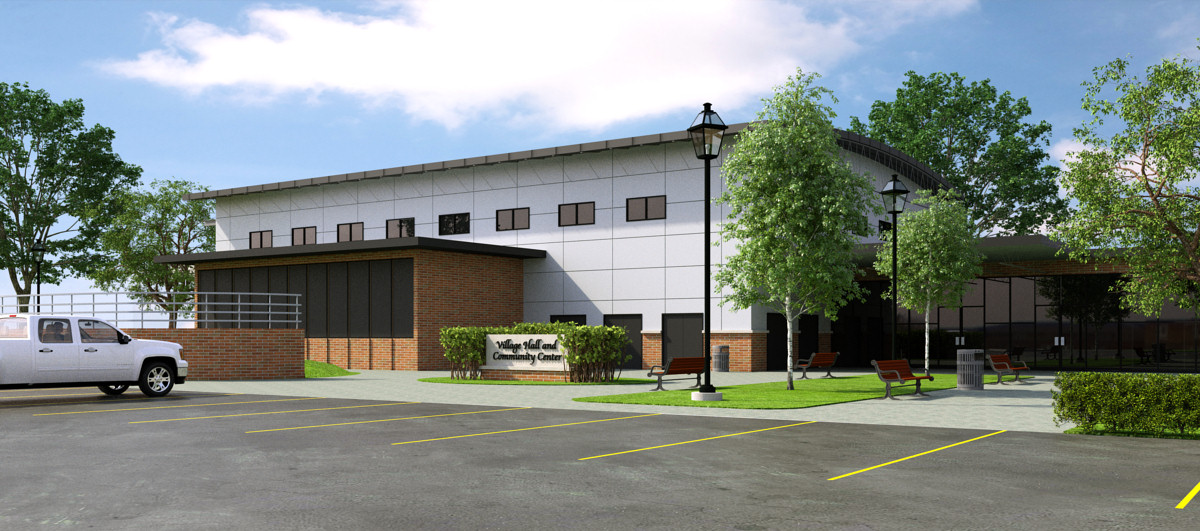Desperate for help
-
@andybot said:
@carlile_architects said:
I will also look at converting the vegetation to proxy's.
I have no idea what that means though. Need to do some research.
EDIT: I see. Proxies minimize file size to keep it more manageable while modeling, but the rendering would still require the Hi-poly components.
I get what you are saying, but that apparently isn't going to help my current problem which is render crashing?
It should though - the proxy conversion replaces your heavy components with a lighter-weight preview "mesh" which you can then duplicate around your model as you need. For sure the trees and shrubbery should be converted to components. I'm wondering if things like the building trusses could be converted as well. The more you rely on proxies, the quicker your processing time to get the vray render started.
Here's an example of a site rendering I did where all the vegetation was done using proxy components: http://charlottesvillearchitecturalrendering.com/?p=556
So it will infact help the rendering effort of Vray to have the trees and other vegetation as proxies?
They are already all components. So, let me look at going through and making them proxy.
Not sure exactly how to do that.
-
Quick overview of using the proxy export:
Edit: 0. insert the component you want to replace at the SU coordinates origin. (look at notes at the end why this is so.)
-
select the component to make into a proxy

-
name and save the *.vrmesh file to a location (network location preferably)
-
click "ok" on the dialogue box that comes up.

-
now you have a component with a "preview mesh" instead of the original component. Save this component to your computer (right click, select "save as")
Edit:
- close out of the model without saving. If you reload the other components in your model with the new one you just created, SU will crash. Looks like this is a bug currently. Re-open your file and now select "reload" with the new component you created.
One other issue - if your component that you made into a proxy is not at the Sketchup origin, it will save the component with a new origin and shift everything off.
-
-
Jacob, Andy's method will certainly make things work faster and smoother, once you create proxy's you can save them and use them for future renders.
Like I said i use Thea render and there too I always use Proxy's see image below, I use basic rectangles for my proxy's, some folk use images, but I work in layers so I find this way easy, now look at the fast 2 minute render and see how the proxy's work.


-
@carlile_architects said:
@solo said:
I tested this model with another render app and it renders with all layers on, sure the model is very heavy and the vegetation should be done with proxy's to keep sizes more manageable.
If you need help rendering this just let me know, I am NOT using Vray however.Hi Solo.
Can you tell me which renderer you are using?
To be honest, I am surprised that Vray is crashing with a model that is now under 28MB. We are rendering on a 64 bit iMac with 8GB memory.
Maybe I am doing something wrong?
Hi Charlie,
Unfortunately Sketchup is still a 32 bit program. Because V-Ray is a full production rendering system inside of Sketchup it cannot access a full 64 bit system. This, sadly, limits you to just under 4GB. That is why the 64 bit workflow was invented. We don't want users to have to export renderings to a 3rd party rendering system outside of Sketchup so we limit our selves in lieu of adding additional workflow. My suggestion is to revisit the 64bit workflow, found here in this tutorial: http://docs.chaosgroup.com/display/VRAY2SKETCHUP/64+Bit+Workflow.
One thing the workflow fails to mention (and I'll correct this on monday), is that you don't have to use the "No Memory" render, you can also use the "Preview" render. This will show you what the scene looks like as its being rendered.
This coupled with proxies should give you great results.
I do hope this helps, and if you are still having problems, email support@chaosgroup.com and mention my user name from the forum and the ticket will get directed to me.
Best,
Ted
-
Pete, that looks darn good for a 2 min render. Did you use Presto?
-
@stinkie said:
Pete, that looks darn good for a 2 min render. Did you use Presto?
Yup presto MC (Titan card)
-
-
What's up with Thea users in the V-Ray forums trying to make converts of us?
There's absolutely no reason VR can't make a render using RT (in 2 min with a $1,000 graphics card) of a 30MB file with proxies.
Make sure you have the latest SP2.
Check your back faces - its good modeling practice
I would group some elements in your model - There's a lot of loose geometry, again its good modeling practice to use groups and layers.
Make all landscape into proxies
Render to EXR or VRIMG using Preview
Use the 64 bit workflow
If you have other machines on your network, setup DR
Advertisement








